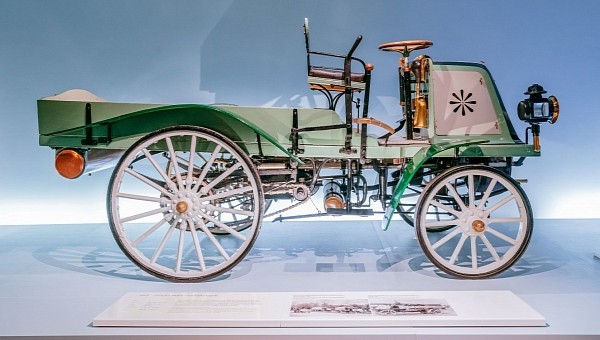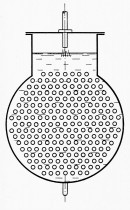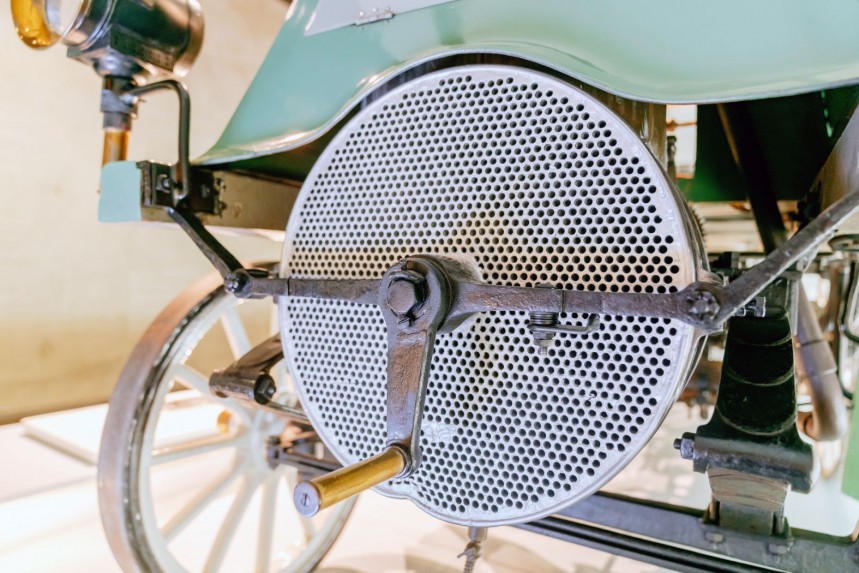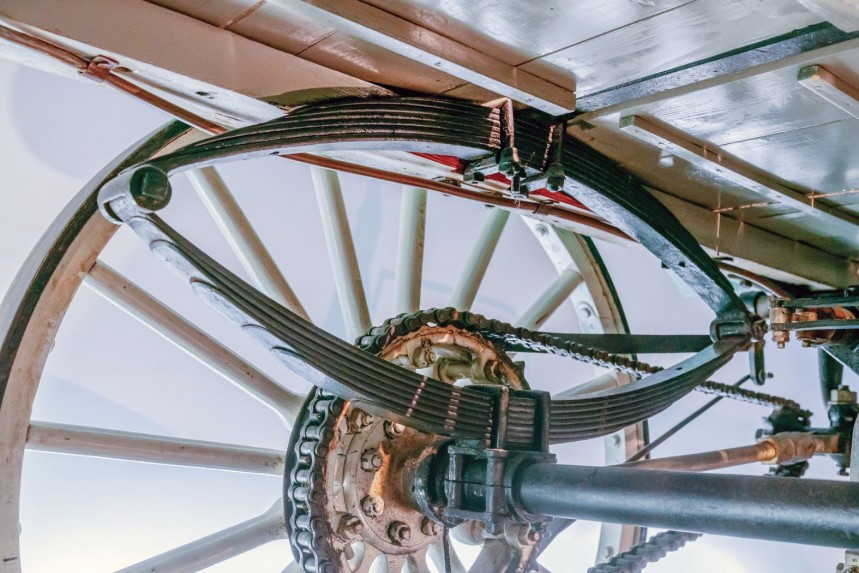The Mercedes Sprinter is a trendy choice for those looking to live life on the road, as it serves as a fantastic base for a mobile home conversion. But ever wondered where it's inspired from? Today, I'd like to present the Daimler motorized business vehicle of 1899, the precursor to today's Mercedes vans.
The vehicle is part of "Close Up," a series by the Mercedes-Benz Museum that, as the company says, "tells a surprising, exciting, or behind-the-scenes story by focusing on a vehicle, an exhibition item, or elements of architecture and design." This time, the museum is showcasing the Daimler motorized business vehicle.
The car was equipped with a tubular radiator, a component invented by mobility pioneer Wilhelm Maybach, which notably improved engine cooling. This high-performance technology was first used 125 years ago in the Pheonix model, and the company registered the utility model protection on December 25, 1987. The Daimler-Motoren-Gesellschaft (DMG) motorized business vehicles were introduced that same month.
The van models quickly evolved – for instance, the 1899 motorized business vehicle was powered by two-cylinder engines delivering 3 hp (2.2 kW) to 10 hp (7.4 kW). It might not look like it, but the models were designed for a 500 to 2,000 kg (1,102 – 4,409 lb) payload.
The following year, the business vehicles could hold from 800 to 3,200 kg, and power ranged from 4 hp (2.9 kW) to 8 hp (5.9 kW) with a two-cylinder engine. In the four-cylinder engine configuration, you could get from 6 hp (4.4 kW) to 12 hp (8.8 kW).
When it first came out, it was clear that its design was inspired by a horse-drawn cart – the 1897 model had an engine under the seat and a free-standing steering column. Things changed by 1899, as the engine was moved above the front axle and was protected by a high bonnet. In case the vehicle's innovative design features and size weren't enough to grab your attention, drivers could use the large horn to make their presence known in traffic.
Power was delivered to the rear wheels through two chain wheels and two roller chains, an improvement from the pinion-driven DMG trucks from 1896. The wooden wheels are larger at the rear, and they're even equipped with solid rubber tires all around.
Dimensions varied according to the payload, from 3.4 to 4.6 meters (11 to 15 feet) long, 1.7 to 1.8 meters (5.6 to 5.8) wide, and 1,000 to 2,500 kg (2,204 to 5.511 lb) heavy. Diversity was a vital element of the German manufacturer's range of vehicles at the time.
This is the origin story of today's vans, such as the Vito, Citan, and Sprinter. As we pay homage to the revolutionizing designs of the past, the automotive world is entering a new era of sustainability and emission-free mobility. Whatever direction Mercedes is heading in, it's keen on innovating and perfecting its vehicles, providing solutions for good transport, delivery services, manual trades, and more.
The car was equipped with a tubular radiator, a component invented by mobility pioneer Wilhelm Maybach, which notably improved engine cooling. This high-performance technology was first used 125 years ago in the Pheonix model, and the company registered the utility model protection on December 25, 1987. The Daimler-Motoren-Gesellschaft (DMG) motorized business vehicles were introduced that same month.
The van models quickly evolved – for instance, the 1899 motorized business vehicle was powered by two-cylinder engines delivering 3 hp (2.2 kW) to 10 hp (7.4 kW). It might not look like it, but the models were designed for a 500 to 2,000 kg (1,102 – 4,409 lb) payload.
The following year, the business vehicles could hold from 800 to 3,200 kg, and power ranged from 4 hp (2.9 kW) to 8 hp (5.9 kW) with a two-cylinder engine. In the four-cylinder engine configuration, you could get from 6 hp (4.4 kW) to 12 hp (8.8 kW).
Power was delivered to the rear wheels through two chain wheels and two roller chains, an improvement from the pinion-driven DMG trucks from 1896. The wooden wheels are larger at the rear, and they're even equipped with solid rubber tires all around.
At the end of the 19th century, delivery trucks and lorries still used steel-tired wooden wheels. The rubber tires were a high-end feature, and Daimler charged 350 to 400 marks for this option in 1897. Imagine how different it must've felt to switch from steel to rubber. However, the DMG sales list advised against using rubber tires for payloads of more than 1,200 kg (2,645 lb).
Daimler's advertisements for the vehicle focused on the van's versatility – bench seats could be added for passenger transport, and it could be used with a box body or as a platform. In 1897, DMG advertised it, "Daimler business vehicles are a particular specialty among motorized vehicles,"This is the origin story of today's vans, such as the Vito, Citan, and Sprinter. As we pay homage to the revolutionizing designs of the past, the automotive world is entering a new era of sustainability and emission-free mobility. Whatever direction Mercedes is heading in, it's keen on innovating and perfecting its vehicles, providing solutions for good transport, delivery services, manual trades, and more.















